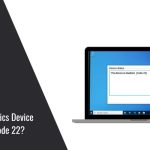In WordPress development, hooks are fundamental to extending and customizing functionality without altering core files. However, it’s easy to fall into the trap of using external global variables to pass data between hooks, which can lead to code that’s hard to maintain and debug. Fortunately, there are several ways to handle WordPress hooks without relying on global variables, helping keep your code clean, modular, and efficient.
This article explores methods to work with WordPress hooks effectively without resorting to global variables, focusing on best practices for creating scalable and organized code.
-
Understanding the Problem with Global Variables in WordPress Hooks
Global variables in WordPress can quickly become problematic due to potential conflicts, unintended overwrites, and debugging challenges. When you declare a global variable, it is accessible across your entire application, which increases the risk of unexpected behavior. This is especially true in larger projects, where multiple plugins and themes are active, possibly using the same global variable names.

To avoid these issues, it’s best to use methods that keep your data self-contained and modular, avoiding any unintended consequences in different parts of your application.
-
Using Class-Based Approaches
One of the most effective ways to handle WordPress hooks without global variables is to encapsulate them within classes. With a class, you can define properties and methods to handle your data and hook callbacks in a controlled scope.
Example:
php
class CustomPlugin {
private $data;
public function __construct() {
// Initialize hooks
add_action(‘init’, [$this, ‘initialize_data’]);
add_action(‘wp_footer’, [$this, ‘display_data’]);
}
public function initialize_data() {
$this->data = “This is some data for the footer!”;
}
public function display_data() {
echo $this->data;
}
}
// Instantiate the class
$custom_plugin = new CustomPlugin();
In this example, $data is a private property, accessible only within the class itself. This keeps the data secure and avoids any interference from other parts of the codebase. This approach also provides a clear structure, making your code more modular and easy to manage.
-
Passing Data with Hook-Specific Parameters
When adding hooks, you can often pass data as parameters rather than relying on external variables. This approach works well for filters, where you can use the data that’s passed into the filter and modify it accordingly.
Example:
php
add_filter(‘the_content’, ‘modify_content’);
function modify_content($content) {
$additional_text = ” – Additional content added.”;
return $content . $additional_text;
}
Here, the modify_content function receives $content as a parameter and appends additional text to it, without the need for a global variable.
For actions, you can use anonymous functions or pass necessary data directly to the function within the same scope, which makes the code less dependent on external variables and more streamlined.
-
Utilizing Dependency Injection for Greater Control
Dependency injection is a powerful technique where dependencies (such as settings, services, or configurations) are passed into a class, making them more flexible and reducing global dependencies.
Example:
php
class ContentModifier {
private $additional_text;
public function __construct($text) {
$this->additional_text = $text;
add_filter(‘the_content’, [$this, ‘modify_content’]);
}
public function modify_content($content) {
return $content . ‘ – ‘ . $this->additional_text;
}
}
$modifier = new ContentModifier(“Injected content”);
With dependency injection, you can pass the required data ($additional_text) directly into the class instance. This keeps your code flexible, allowing you to easily change the content without editing the core of the class.
-
Leveraging WordPress Transients or the Options API
If your hook data needs to persist across different requests, consider using WordPress’s built-in Transients or the Options API. Transients are particularly useful for storing data that may expire after a certain period, while the Options API is ideal for more permanent data storage.
Using Transients:
php
add_action(‘wp_footer’, ‘display_transient_data’);
function set_transient_data() {
set_transient(‘footer_data’, ‘This is footer data’, 60 * 60);
}
function display_transient_data() {
if ($data = get_transient(‘footer_data’)) {
echo $data;
}
}
// Initialize the transient data on ‘init’ hook
add_action(‘init’, ‘set_transient_data’);
Here, the set_transient_data function stores the data, and the display_transient_data function retrieves it. The transient will expire in one hour, at which point it will no longer be available. This avoids globals while providing a simple, temporary storage solution for data used across hooks.
-
Using Static Properties for Persistent Class Data
In some cases, you may need to keep certain data persistent across instances of a class. Static properties within a class can help achieve this without polluting the global namespace.
Example:
php
class UserCounter {
private static $count = 0;
public function __construct() {
self::$count++;
add_action(‘wp_footer’, [__CLASS__, ‘display_count’]);
}
public static function display_count() {
echo “Number of users: ” . self::$count;
}
}
// Each instantiation increments the counter
new UserCounter();
new UserCounter();
Static properties, like $count, are shared across all instances of the class and persist until the end of the script execution. They provide a way to store data that doesn’t change during the request, without making it globally accessible.
-
Using Closures (Anonymous Functions)
Anonymous functions or closures provide a lightweight way to manage hooks in a local scope. They are particularly useful for simple tasks where you don’t need the added complexity of a class.
Example:
php
add_action(‘wp_footer’, function() {
$footer_text = “This is footer text!”;
echo $footer_text;
});
By using a closure, $footer_text remains local to the function and doesn’t interfere with other parts of the code. This approach is ideal for single-use hooks, ensuring the data stays encapsulated.
Conclusion
Handling WordPress hooks without global variables is essential for creating maintainable, scalable, and conflict-free code. By using class-based approaches, dependency injection, transients, static properties, and closures, you can effectively manage data and functionality within hooks while keeping your code organized and modular.
These techniques not only reduce the likelihood of conflicts but also promote good coding practices, making your codebase easier to understand and extend in the future. Start incorporating these methods into your WordPress development to experience the benefits of cleaner, more modular code.



